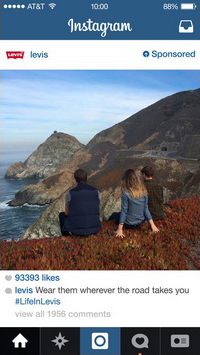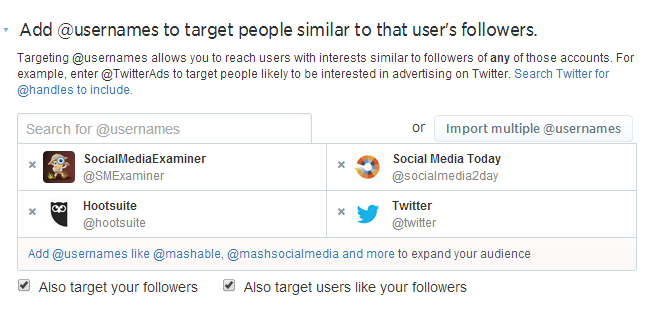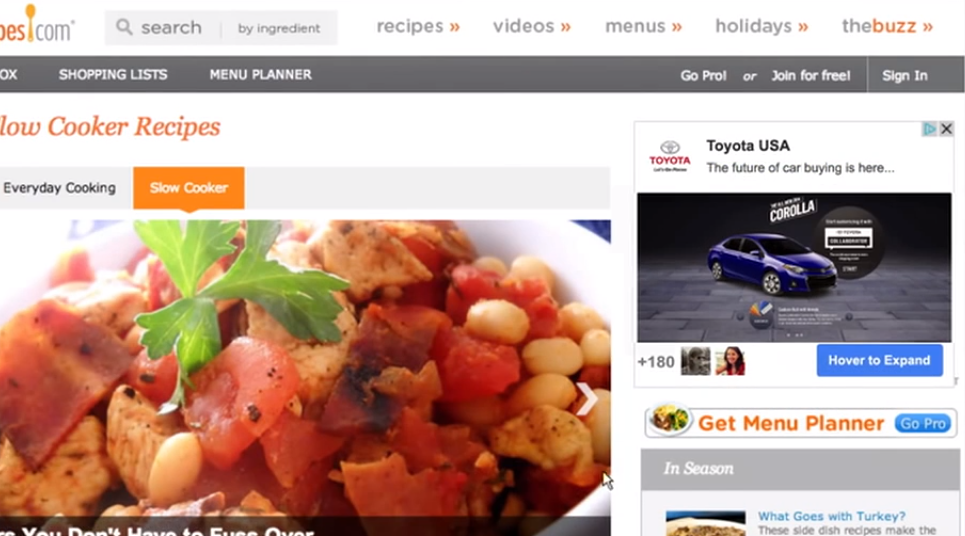12 years ago, Friendster debuted.
Since then, the number of social networks has exploded.
And in the past few years, so too have the opportunities for social advertising: Facebook, Twitter, LinkedIn, Instagram, Pinterest, Google+.
It can be a little overwhelming.
Americans spend 37 minutes each day on social media, so social ads are a great opportunity to help you connect with your audience. But should you be using them? And which platforms should you put money into? How do you keep from getting bogged down in all your options? And how do you get the results you want?
It’s advertising. It’s on a social networking site.
You’re paying to reach people who don’t already follow/like/whatever you.
For a lot of companies, social ads are part of the overall digital advertising strategy which might include Google AdWords and a few well-placed banner ads. (Yup, banner ads are coming back. Maybe.) But if you’re not advertising on social yet, there are a few key reasons to consider it:


But, as we said, there are a lot of different social networks to advertise on. Should you be on any? Should you be on them all? Or maybe just a select few?
First you have to consider:
Once you have answered those questions, take a look at what’s out there and see what matches up.
You might call Facebook the gateway to social advertising. They’ve been doing it the longest, they have the largest audience, and they make it wicked easy.
Right from the very beginning, Facebook focuses on your goals as it guides you through the ad process.
Once you’ve told Facebook what you’re trying to achieve, you’ll be funneled into one of two ad types.
One is the marketplace ad. You’ve been seeing these on the right side of your screen for years, but today they also show in your desktop or mobile newsfeed with snazzy call-to-action buttons like “shop now” and “download.”


The other type is the promoted/boosted post: content ads. The only thing that separates them from the usual content in your newsfeed is the word “sponsored” at the top of the ad.

So, a couple things to know about Facebook ads:


On to Twitter, the mico-blogging wonder.
If you’re trying to get more followers, you can promote your account.

And if you’re trying to get people to click on something, there are also promoted tweets, which are just like Facebook’s promoted posts: content ads.

(Last year, Twitter had a bit of a makeover and joined the visual-centric ranks, so your promoted tweet doesn’t have to be all text.)

Finally, there are promoted trends – intended to get a conversation going about your company or product.

However, unless you’re budget is several thousand dollars, forget it.
The current cost of a promoted trend isn’t public, but rumor has it they went for $600,000 a day during this year’s World Cup.
Some notes about Twitter:

The web design processes – the ups, the downs – explained with GIFs. http://t.co/tY3nslQTFt http://t.co/8AFkMSWxW1
— Brick Factory (@BrickFactory) August 6, 2014
Check back with us next week. We’ll do a full post on Twitter ads that will include which ad to use to meet your goals and ad creative best practices.
Although it is often overlooked in social advertising, LinkedIn has a lot to offer. Because it is the professionals’ network, it’s perfect for business to business advertising or anything that furthers a career like skill development or networking events.
But it can be more than that too. Especially since LinkedIn has taken steps in the past year to become a source for content, not just connections.
Ads can be placed in one of three areas:



Some key things to note:
A couple years ago, this chart was floating around the Internet that helped to explain social media with donuts.
Facebook: I like donuts.
LinkedIn: my skills include donut eating.
Google+: I’m a Google employee who eats donuts.
Apparently, for Google+, that’s not entirely accurate anymore.
With over a billion users, they’re catching up to Facebook pretty quickly.
(Although it’s worth mentioning that many of us were forced to join Google+. You have Gmail? Now you have Google+. And although Google+ claims it has 359 million monthly active users, we’re skeptical.)
But what’s interesting about Google+ ads, also known as Google +Post ads, is that they aren’t strictly social.
Like other social media networks, you can create content on Google+ and then pay to promote it.

What is different is that you’re paying to promote it on other websites, not on Google+. But users can interact with it just like they would on a social network without having to leave the page they’re on.
It’s like if display ads and social media ads had a torrid affair and produced a mutant super ad.

But, fun fact, you can’t run these ads unless you are a “qualified brand on Google+” with over 1,000 Google+ fans.
One of the newest ad options out there.
Mashable calls Instagram, “A Marketer’s Best Friend” because people engage. A lot. A lot a lot. Like 60 times more than on Facebook.
Not to mention, the young tastemakers (or the millenials are we are popularly called) are all over this Instagram thing. Instagram has 150 million users. 90 percent of them are under 35.
(More on the millennial marketing machine here.)
As we’ve already shown, what’s nice about Instagram ads is how seamlessly they fit into your feed.
What’s bad about them is you probably can’t use them yet and no one knows what they cost. Instagram is starting slow and beta testing its ad program with a select group of brands like Ben & Jerry’s and Levi’s to “stay true to the spirit of the Instagram community.”
So far, we’ve seen some that do a pretty good job:

And we’ve seen some that read like an ad:

But, Instagram recently hired a guy to oversee its ads, so don’t be surprised if Instagram opens up its advertising options soon.
Pinterest is also new to the social advertising game, launching their promoted pins early this year.
Like Instagram’s ads, Pinterest’s promoted pins blend in with the various feeds.

But the thing with Pinterest’s promoted pins is they are crazy expensive.
Do you have 1 million dollars? I don’t. So I guess I won’t be promoting my pins anytime soon.
(I can’t anyways. Like Instagram, Pinterest ads are only for a select few for the time being, but you can ask to be considered.)
Now, a million dollars is for the entire, several-month contract and it breaks down to about $30 CPMs – the cost per thousand impressions. But compare that to Facebook, where you might be looking at $6 CPM. (I did the math for you – Pinterest ads are 500 percent more expensive than Facebook ads.)
Why is Pinterest able to charge so much?
It’s audience.
Sure, Pinterest has a lot of ladies who tend to have money to spend. But one thing that makes Pinterest unique is its users are looking to take action. Two-thirds of Pinterest’s users have tried a craft or a recipe they found on the site. (Yup – I have too. Several recipes, in fact.)
It’s all about the high click-through rate. And the fact that Pinterest brings in way more money (yay, ROI) than Facebook and Twitter.
Kraft gets to promote recipes that use Kraft products. People will pin them, click on them, make them.
Lululemon gets to promote their latest leggings. People will pin them, click on them, buy them.
This is just a starting point.
We can’t tell you what ads will be best for you because, like most digital marketing, a good social ad requires a lot of experimentation and tweaking.
Every company is different.
Every audience is different.
Every ad is different.
You’ve got to try different networks.
Different targeting.
Different budgeting.
Different images.
Different calls-to-action.
Different headlines.
But, all that aside, once you’ve taken stock of your goal, resources, and audience, you’ll be able to make a more educated first stab – you’ll spend money more efficiently and spend less time tweaking.
Sign up today to have our latest posts delivered straight to your inbox.